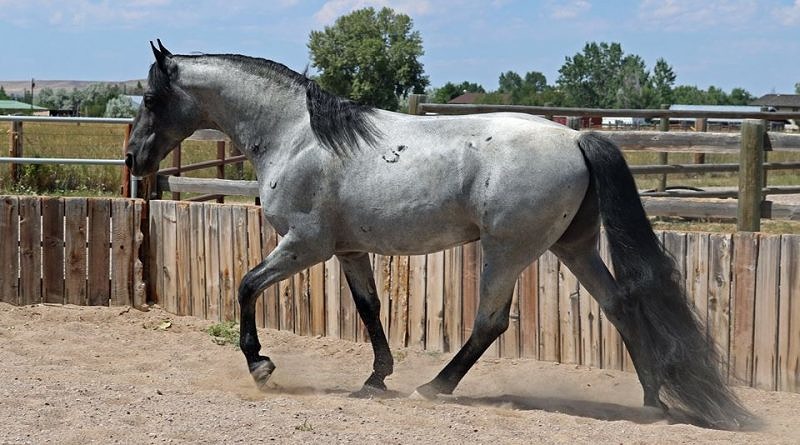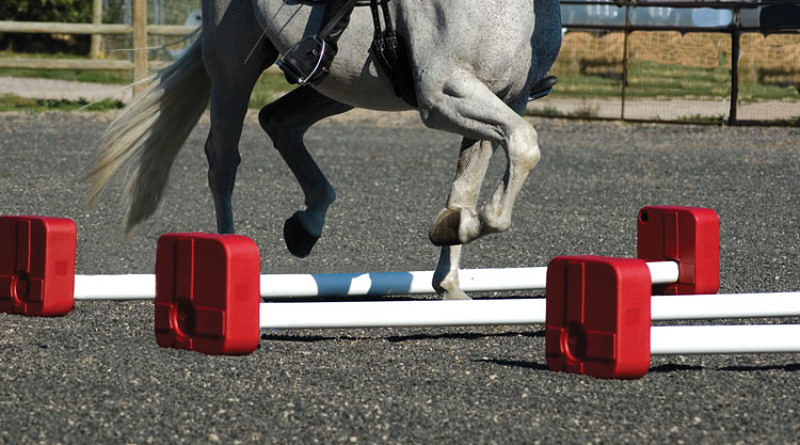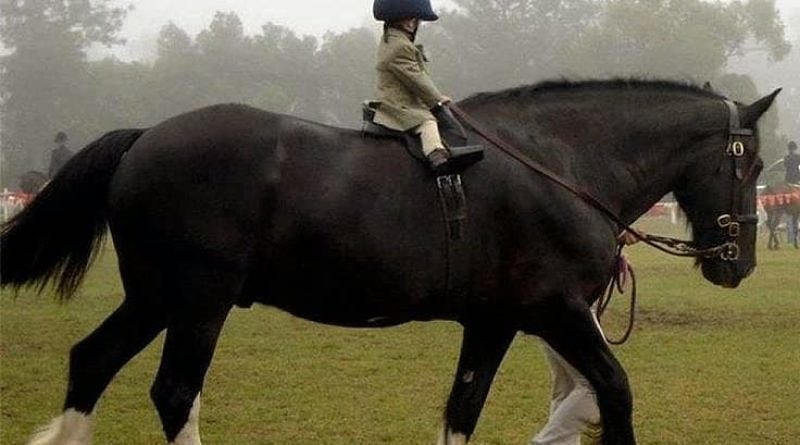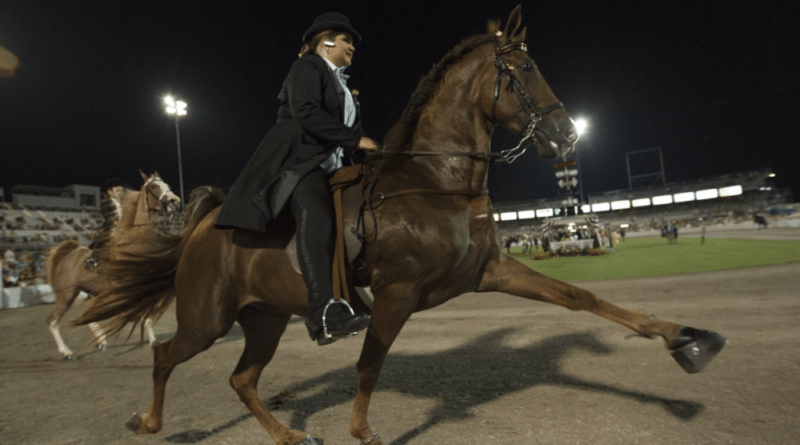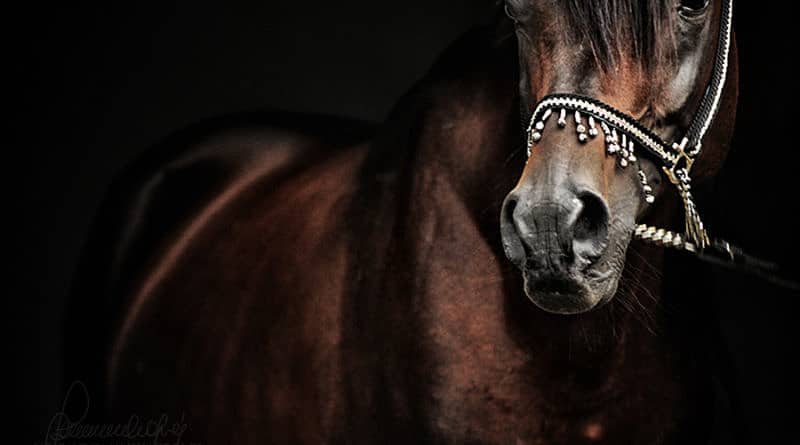Maybe she’s born with it: 5 incredible facts about gaited horses!
Can your horse do the running walk, paso largo, marcha picada, tölt, singlefoot, rack or pace? Gaited horses break the mould when it comes to getting around!
Singlefoot, tölt, pace, and more… There are dozens of alternate gaits!
Horses with the ability to ‘gait’ often perform their alternate gaits instead of trotting, though most are also able to trot if they want to.
Ambling gaits consist of a 4-beat footfall pattern but they vary in terms of exact timing and speed. Some 4-beat ambling gaits have an even footfall pattern (1-2-3-4) while in others there is a more uneven 1-2, 3-4 pattern.
To the untrained eye, some ambling gaits are difficult to distinguish from an ordinary trot. Take a look at these Mangalarga Marchadors:
Can you spot the foal gaiting? The mare also gaits, trying to keep up with her cantering newborn!
In other instances the result is quite extraordinary and unmistakable!
Another common type of gait is a pace. This is the two-beat lateral gait most familiar from Standardbred pacers.
Training can alter and refine alternate gaits, just as with an ordinary trot, producing collected and extended variations too.
Gaits can be called many things depending on the breed, speed and/or footfall pattern. These names include, the running walk, pace, stepping pace, paso fino, corto, and largo, marcha picada and marcha batida, paso llano and sobreandando, tölt, singlefoot, rack, ravaal, and flying pace!
Here is a video of an Icelandic Horse demonstrating several different gaits, including the more familiar ones:
It’s in their genes!
The ability to perform lateral ambling gaits and pacing has been tied to a simple genetic mutation which allows the horse more freedom to move each of their legs independently. In an ordinary trot, a horse’s legs move in diagonal pairs. Horses that cannot gait find it really difficult to move the two legs on the same side of their body forwards at the same time, though some can still be trained to do so. A horse born with the ability to gait, on the other hand, is not bound by this diagonal pairing.
You can think of this as similar to how we involuntarily move our arms in time with the opposite leg when we run. Try running with your arms moving forwards in time with your legs – your right arm pumping forwards with your right leg, left arm with your left leg, instead of right arm-left leg, left arm-right leg. It sounds simple but it’s actually quite challenging! A gaited horse doesn’t struggle to do this and can move their legs more freely and independently from each other, allowing them to gait!
In addition to allowing the horse to gait, this gene appears to influence when a horse has to transition into a canter/gallop. Horses with the mutation that allows them to gait are often also able to maintain the gait at higher speeds than an ordinary horse can trot. This makes them less likely to transition into a canter at high speed.
Maybe she’s born with it!
Since there’s a genetic basis for gaiting, most horses that can gait are born with the ability to do so and will use and “show off” their special gaits all by themselves!
For someone who has never seen a horse gaiting, this can look very strange and ‘unnatural’ – but it really is something they are born to do!
This little Paso Fino foal is demonstrating an alternate gait! The quick little steps are what gave this breed its full name, which translates to “horse with the fine step”. With training, this foal might develop an even more collected gait for show – or start to extend and cover the ground for trail riding or even endurance! Gaited horses are a popular choice for these kinds of activities because they are very smooth to ride and sure-footed.
Alternate gaits have been around for over a thousand years!
The remains of gaited horses have been found in England dating back to around 850 AD. It is possible that the mutation originated there, from where it spread to other parts of Europe and Asia, and later the Americas.
Horses with smooth alternate gaits were favoured in the past as general riding horses. Medieval paintings depict horses known as palfreys performing ambling gaits. These horses were favoured over trotting horses because they could cover large distances in their smooth gait without tiring, while also being far more comfortable to ride than a bouncy trotting horse!

In Europe gaited horses were almost completely replaced by trotting breeds. Several reasons have been proposed for this transition. First, as roads improved, more travel was by carriage rather than on horseback. This favoured larger breeds, which happened to be trotters, rather than the smaller gaited riding horses that had been popular before. In addition, the rise of the versatile Thoroughbred and other breeds bred for racing, light cavalry and hunting, resulted in most gaited breeds being replaced by trotting breeds that were quick to transition into a gallop, rather than gaiting faster and faster!
From Iceland to India, gaited breeds are everywhere!
Even though their ancestors likely originated in England, there are relatively few gaited breeds that are familiar in the UK. And with the notable exception of the Icelandic Horse, most European breeds are not gaited despite the historical popularity of horses that could amble.
However, the Americas are still home to many breeds of Spanish descent that retained their ability to gait. In fact the South American Paso Fino and Peruvian Paso breeds are probably quite similar to the palfrey of Medieval times. There are several other South American gaited breeds as well – among them are the Mangalarga Marchador and Campolina.
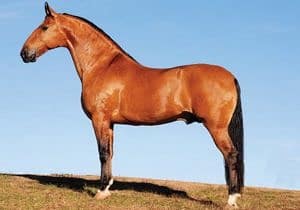
Other more modern breeds such as the Morgan, Tennessee Walking Horse, Rocky Mountain Horse, and Saddlebred are very popular in the USA. Even some Mustangs – the descendants of domestic horses that escaped or were released into the wild – can gait!
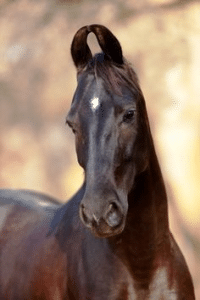
There are also a variety of gaited horses still surviving throughout Asia, from semi-feral nomadic herds in Kyrgizstan, to Indian and Pakistani breeds better known to the rest of the world for their curly ears!

